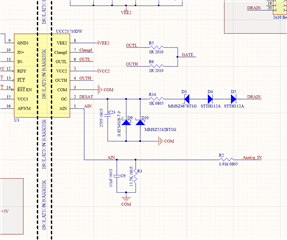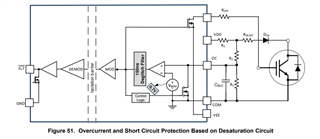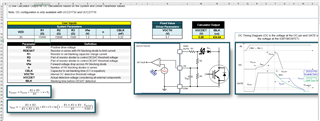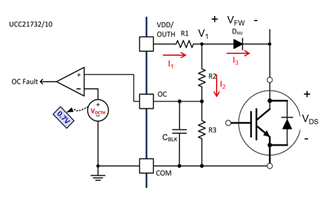Other Parts Discussed in Thread: UCC21750
I am currently designing a gate driver for SIC. I want to make a board where I can use UCC21710 if UCC21750 is not available or vice versa. So as shown in the below picture the Desat circuit is fine for UCC21750, now if UCC 21750 is not available in market and if I have to use UCC21710 then, I want to know how to use the OC pin of UCC21710 for DESAT protection?

Fig.1
The below figure shows the circuit for using the OC pin for desat protection in UCC21710

Fig.2
Now it is said in the explanation (in Page 41 of UCC21710 datasheet) that the Resistors R1 and R2 should be higher than pull down resistance of internal mosfet, now the questions are as folows
1) how much is the internal mosfet resistance?
2) How to choose R1, R2 and R3 and R_desat?
3) With the circuit used in the Fig 1. how to design the R1, R2 and R3 and R_desat in order to have the Vds_during short circuit is 4V or less?, I am using a SIC Mosfet NVH4L040N120SC1 (2 in parallel) (used in 3-phase inverter)
4) How Vocth differ from Vdesat (9 V)?
5) how to achieve a 500ns or less blanking time with OC pin?
Thank you
Vijaymahantesh V Surkod



